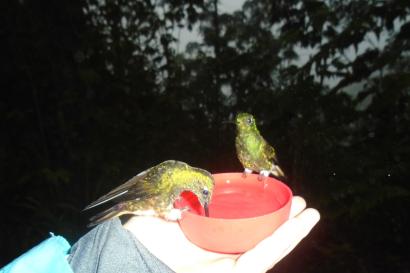Let me start off by saying that describing this experience and giving the Amazon Rainforest the recognition it deserves is impossible. I can only attempt to describe it, but words don’t showcase its beauty and importance.
The Amazon Rainforest is one of the most critically important ecosystems of the world, not only because of its large biodiversity (consisting of over 3 million species) but because it also stabilizes the climate, absorbing around ¼ of the CO2 absorbed by all of the land on earth. I am very grateful to have experienced traveling to the Amazon and want to share my experience with you in hopes that you will consider traveling to this unique and breathtaking world-wonder. (Also, if you stay to the end you’ll get to hear all about the majestic wildlife we encountered!)
Overview
I traveled here with my Tropical Ecology class which was part of the Evolution, Ecology, and Conservation Module through the IES Abroad - GAIAS Program. We spent a day traveling to get to the Amazon, stayed in the forest for four nights, and spent one day traveling to a town called Coca (aka. Puerto Francisco de Orellana) where we stayed a night at a hotel before flying back to Quito on Saturday afternoon.
Travel days
From the University (Universidad San Francisco de Quito) we took a 30 minute bus ride to the Quito airport, then a 30 minute flight to Coca. Following, we took a two hour canoe ride to the oil company station, then a two hour bus ride, and lastly another two hour canoe ride to TBS (Tiputini Biodiversity Station). Don’t get me wrong, travel days were long, but we saw so many animals when going to and from the station!
The Stay
The temperature in the Amazon is very hot and humid, you’ll always be covered in a layer of sweat, but most of the time you’ll be too busy observing nature to think twice about it. There’s a dry box in the library for all electronics and I highly recommend using it! Usually it rains everyday in the rainforest, but there was an extreme drought so we only got rain once while there. At night, we slept in cabins that were screened in, allowing us to fall asleep to the calming sounds of nature (crickets, frogs, and birds). I actually slept better in the Amazon than I have in months in Quito. During the day, there were only two periods of time where we had electricity (lights, charging phones, etc.). These times were roughly 10-1 P.M. and 6-9 P.M. Oftentimes, we would charge our phones (even though there was no cell service) and our cameras, as well as take showers during these times. Speaking of showers, there was no hot water but honestly, you’ll be thankful for a nice cold shower after a sweaty day! As someone who loves camping and spending time outdoors, this was a glamorous “living off the grid” experience.
Itinerary
During our trip, we hiked to a nearby lake, hiked to a tower and climbed it, and visited a mineral pond (by boat) early in the morning to watch parrots flock to the area to drink from the pond. We got to swim in the Tiputini River and float down it for an hour and later that evening we floated down the river by boat to observe some nocturnal creatures including caiman and some birds. Some peers who went to the Amazon a month earlier than us saw a Jaguar on the night float! One evening we did a night walk through the woods where we saw frogs, snakes, spiders, and other insects. Beyond exploring nature, we had free time to play cards or read a book, played a small soccer game with TBS staff on the last day, and had very interactive and thought provoking class discussions involving problem solving and making hypotheses about wildlife (thanks to our professor, Esteban)!
Best for Last - The Beauty of Nature
It’s impossible to name everything we saw, but here is a list of what I remember!
- Capybara twice with pups
- Otters (tropical and giant)
- Tons of birds (Kingfishers, Salvin’s curassows, toucans, macaws, herons, falcons, hawks, swallows, shorebirds, sungrebe, and more!)
- Butterflies (so many ranging from yellow, to orange, to black and green, to blue…even phantom butterflies)
- Five species of monkeys (spider, howler, squirrel, tamarin, woolly)
- Turtles, snakes, frogs
- Huge spiders (including tarantula)
- Bioluminescent fungi (as well as so many other species of fungi)
- Bats (proboscis bats and others)
- Very unique trees including tree with ants that kinda taste like lemon (Duroia hirstula), tree with huge spikes and horns, liana vines hitching rides from one tree to the next, trees with buttress roots, walking palms, and strangler fig trees (wraps around another host tree as it climbs its way to the canopy)
If you are considering studying abroad in Ecuador or taking a trip to the Amazon Rainforest, do it! If you have any questions, feel free to message me through Instagram (@faith.y15)!



Faith Yost
Hi! I'm from Pennsylvania and I've always wanted to travel the world while sharing my experiences with others! I love being outdoors, including hiking, camping, or going to the beach. I'm excited to explore the natural world and culture in Ecuador!










